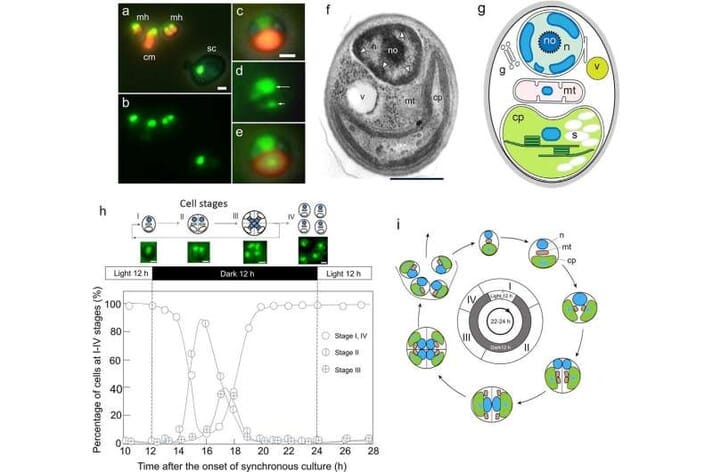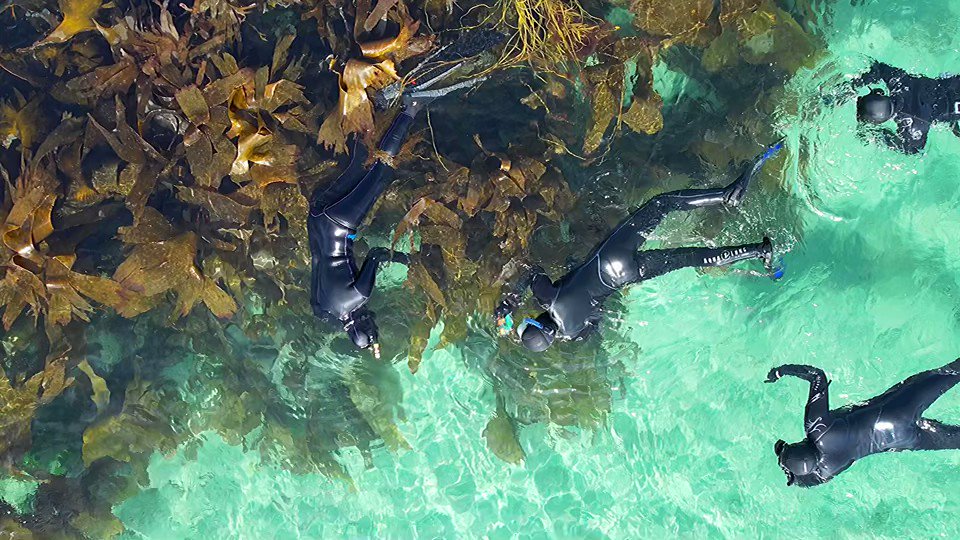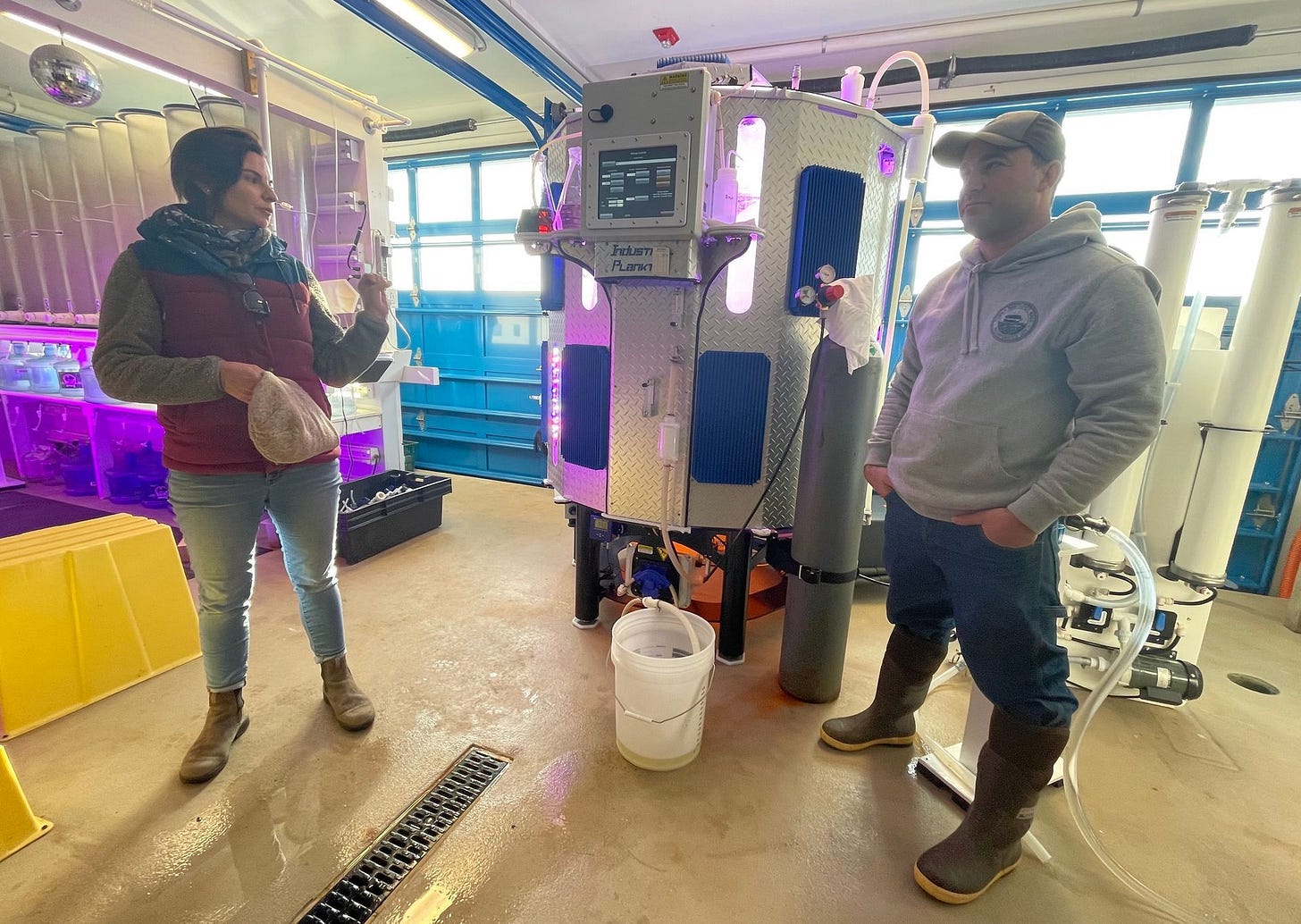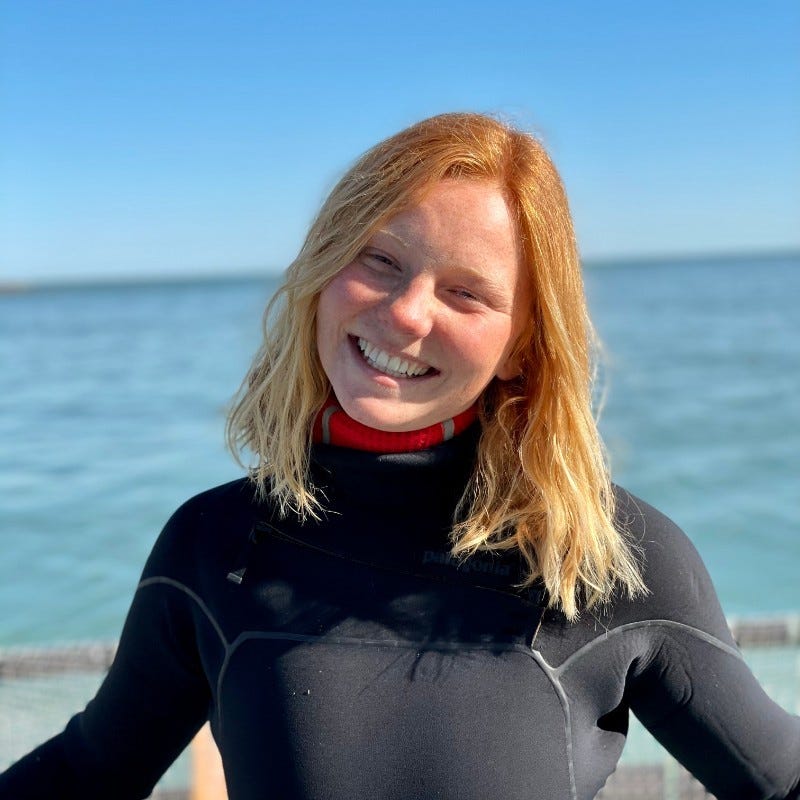🌱Diving into seaweed supply chains with Hatch Blue
PLUS: Skin health supplements almost tripled from 2017 to 2021, Kelpi has secured £3m, and genomic analysis of ultrasmall freshwater green algae.
“The Western world is leading the way in developing more technological, scalable seaweed farming that reduces labour needs. But we don't want to leave behind other parts of the world, especially Southeast Asia, where there's a lack of innovation and support for improving seaweed farming efficiency." — Karlotta Rieve, Hatch Innovation Services.
Dear algae technologists - hello and welcome to the Paxtier Report!
This week, meet Al Plankovic:
That's the nickname for Nantucket's new photobioreactor, supplied by Industrial Plankton, which will increase production of algae for the Brant Point Shellfish Hatchery.
In today’s report:
Markets: 💸 Skin health supplements almost tripled from 2017 to 2021. And astaxanthin derived from microalgae is in the spotlight.
Deals: 🤝 Kelpi has secured £3m to develop sustainable seaweed bioplastics.
Movers and Shakers: 🌱Diving into seaweed supply chains with Hatch Blue.
Around the web: 🍲 L-fucose can increase TILs, promote antitumor immunity, and improve the efficacy of immunotherapy.
Research: 📝 Genomic analysis of an ultrasmall freshwater green alga.
Markets and Investing
✂️Algae Market Snippets
Some big moves in recent weeks:
Germany has unveiled a €1bn fund for deep/climate tech growth-stage companies. (Read more HERE).
The demand for Sea Moss continues as True Sea Moss, a natural and organic supplement company, announces a record-breaking $2.5 million in sales in 2022. (Read more HERE).
Triton Algae Innovations has launched its first algae-infused pasta product, a high protein Fusilli, under the brand Too Good To Be Foods. (Read more HERE).
Kelpi has secured £3m to develop sustainable seaweed bioplastics. (Read more HERE).
Grill’d launches grass and seaweed-fed low methane beef burger. (Read more HERE).
UPL launches WAVE Biostimulant in Canada. (Read more HERE).
Loughborough University awarded funding to support UK green growth and net zero ambitions - microalgae tech benefits. (Read more HERE).
Tesco launches UK’s largest low-carbon fertiliser roll-out. Six out of eight fertiliser producers will be manufacturing their products in the UK from material including algae. (Read more HERE).
Indonesia is “considering using seaweed to produce bio-crude to help reduce the country’s reliance on costly imported fossil fuels.”(Read more HERE).
Eco Cascade is raising £50,000 for their seaweed processing play. (Read more HERE).
Whole Foods rolls out algae-based sushi in flagship stores. (Read more HERE).
Bion and BetterFedFoods to form alliance. (Read more HERE).
In Scotland, Stirling Council's Planning and Regulation Panel has given conditional approval for the construction of an algae manufacturing facility near Balfron. (Read more HERE).
Tokyo begins trial to run public buses on biofuel. (Read more HERE).
USDA, Springtide Seaweed partner to tackle cultivation challenges and boost growth. (Read more HERE).
Innova: Skin health supplements almost tripled from 2017 to 2021. Astaxanthin – a microalgae ingredient – is in the spotlight for its broad applicability and functionalities in this sector. (Read more HERE).
NYK will donate 3 million yen to Nishio City for the purpose of environmental conservation on Sakushima Island in Aichi Prefecture. (Read more HERE).
For the first time, Seakura seaweed was used as a biofilter by The National Water Company. (Read more HERE).
Viride is crowdfunding. (Read more HERE).
Olmix has acquired Bois Valor. (Read more HERE).
Vincle Capital invests in start-up Mediterranean Algae. (Read more HERE).
Sirputis UAB, a provider of seaweed farming and processing equipment, has entered into a partnership with Polar Algae AS, the seaweed production company. (Read more HERE).
Research from Hatch Innovation Services suggests that limited availability of biomass is the biggest bottleneck in the macroalgae industry – indicating that production deserves more dollars in both established and emerging seaweed regions.👏 (Read more HERE).
Israel-based Haifa Group and SimpliiGood say they’re partnering up to optimize the SimpliiGood spirulina supply chain with a specific focus on the plant-based protein sector — including the development of a spirulina-based smoked salmon. (Read more HERE).
In depth with Peter Green
🌍 Diving into seaweed supply chains with Hatch Blue
Karlotta Rieve is a project manager at Hatch Innovation Services (HIS), the specialised aquaculture consultancy unit of Hatch Blue.
For years, Hatch has supported the growth of the aquaculture industry through accelerator programs, tech investments, and market insights. And now, the company is diving deeper into macroalgae with the launch of Seaweed Insights, a platform that provides a wealth of industry intelligence and exclusive insights gathered from a year-long, worldwide examination of seaweed supply chains.
In this excerpt from our recent conversation, Karlotta takes us through her journey into the world of aquaculture, the challenge of transitioning to a more technological sector, and provides valuable advice for others in the space.
How did you get started in aquaculture?
Growing up on a farm, the future of food supply was always top of mind for me. So after studying business in university, I sought out innovative food solutions and worked with food tech start-ups in the Nordic region.
It was then, through a neighbour's podcast, that I discovered the exciting world of aquaculture and Hatch Blue. As a lover of all things water related, I was captivated by the idea of using aquaculture to provide sustainable food and restore the ocean's health.
I abandoned plans for a second master's degree and sought hands-on experience at a land-based shrimp farm in Bavaria, intrigued by the challenge of growing saltwater shrimp in the Alps. I then worked with Ocean Rainforest on the Faroe Islands, igniting a deeper interest in seaweed, and interned with the Hatch team in Norway.
Fuelled by Hatch Blue's commitment to advancing aquaculture and their thought-provoking 2019 shrimp farm technology report, I pitched the notion of a worldwide seaweed investigation to the team. With the support of the Nest Family Office, we then secured the necessary funding to build a knowledge base for the industry.
What’s the aim of The Global Seaweed Study?
The main objective was to compare how commercial seaweed species are farmed today and gather practical insights that could help identify and verify innovation opportunities for - and investment opportunities in - the global seaweed sector.
We followed the methodology of Hatch’s shrimp farm tech report and visited over 100 farmers, processors, input suppliers and researchers to capture how the industry is evolving in Asia’s established seaweed farming regions.
Seaweed Insights offers a practical guide to global seaweed farming. The platform provides a comprehensive, yet accessible understanding of seaweed farming. That's why the website has a strong focus on visuals, with pictures showcasing each step of the process. The hope is that this will help people get a better understanding of seaweed farming without having to sift through countless YouTube videos.
We’ll also soon release a Global Seaweed Markets Report which analyses new and emerging market opportunities.
What particularly excites you about seaweed?
My travels to Southeast Asia left a lasting impression on me. The potential for seaweed farming to uplift marginalised communities is incredible and I'd love to see similar efforts in other regions and coastlines around the world. There's still much work to be done and a need to bridge the gap between where seaweed is farmed and where innovation takes place.
Currently based in Baja California Sur, Mexico, I strive to support and advance sustainable aquaculture in both developing and established regions. I am particularly intrigued by the expansion of the Latin American seaweed industry and exploring Africa's untapped sector, as well as connecting these supply chains to cutting-edge seaweed products.
What major challenges does the seaweed industry face?
One of the biggest concerns is how we transition to a more technological sector in a way that benefits everyone. The Western world is leading the way in developing technological, scalable seaweed farming that reduces labour needs, but we don't want to leave behind other parts of the world, especially Southeast Asia, where there's a lack of innovation and support for improving efficiency in seaweed farming.
In the long term, it's questionable whether the current, highly labour-intensive seaweed sector in Asia can be sustained, as people are increasingly seeking more education and different job opportunities. It's clear that seaweed farming has had a positive impact on coastal communities, bringing economic prosperity and new job opportunities. However, as seen in countries like Japan, South Korea, and China, a lack of young people in the sector could become a problem in the future. This could lead to a lack of innovation. As a result, we must find inclusive business models that support smallholder farmers, allowing them to become more efficient, improve their output, and scale-up using technology - all while being fairly compensated for their efforts. It will be interesting to see how these communities continue to grow and adapt in the years to come.
Another challenge relates to the patchy supply of seaweed. In developing seaweed regions like Europe and North America, there’s a "chicken and egg" problem, whereby buyers need a steady supply of seaweed for their processing facilities, while suppliers need proof that scaling will be met with adequate demand for their seaweed. This is often said to be the main barrier to growing the industry in the Western world. Investing in primary production – be it establishing new farms or making existing ones more productive and efficient – might be the best way to catalyse the growth of the seaweed sector in these regions.
In Asia the demand for raw seaweed is outstripping supply, generating excellent – albeit fluctuating – prices for efficient growers. Meanwhile, in the West, the lack of production is preventing a growing number of start-ups from commercialising their products. We recently published an article about this in The Fish Site.
What advice would you give to someone else starting out on this journey?
Getting hands-on experience on seaweed farms was the key for me to truly grasp the industry, even without prior knowledge of aquaculture. The farm-based atmosphere was welcoming and provided a unique opportunity for young people to learn and explore. Now, when I read about seaweed, I have a deeper understanding due to that experience of harvesting on a boat and seeing the real-life impact of production.
If you’d like to learn more about Seaweed Insights or join them in their mission, check out the company site here. You can also follow Karlotta on LinkedIn here.
🐦Tweet of the week

📝Research Rundown: Genomic analysis of ultrasmall freshwater microalgae.
THE BIG IDEA
The discovery of Medakamo hakoo (Chlorophyta), a tiny algal species found in a regular home aquarium in 2015, provided a rare opportunity to genetically analyse an ultrasmall freshwater species.
Inspired by this discovery, Kato et al. recently delved into the organism’s genome, eager to uncover valuable insights that could lead to improved microalgae cultivation yields and the production of valuable algal compounds.
The methodology
The team kicked off their analysis with a characterisation of M. hakoo's morphological features and cell cycle synchronisation. Next, they pieced together the genome through long reads generated by the PacBio RSII system and transcriptome analysis. And finally, they compared M. hakoo's genome to 14 other ultrasmall algae species.
Here’s what they found…
"M. hakoo contains only one mitochondrion and one chloroplast, whereas normal plant cells contain multiple mitochondria and chloroplasts. This indicates that it is a green alga with an extremely simple cell structure" said Professor Sachihiro Matsunaga from the Graduate School of Frontier Sciences.

"From our research, we speculated that it has an unprecedented DNA structure and a new gene regulatory system. Its cell cycle is also strongly synchronised with the day and night cycle, which is key to effective, stable bioproduction. Due to these inherent qualities and extremely small size, M. hakoo can be effectively cultured at high cell density, making it possible to mass produce substances such as highly functional foods, cosmetics and bio-fuel at a low cost."
Be sure to check out…
M. hakoo boasts one of the smallest genomes among freshwater algae and shares 1263 gene families with other microalgae. This shared gene set opens up new opportunities for research, as it can help identify genes crucial to algal metabolism and cellular processes, provide a foundation to identify the minimal conserved gene set of plants (algae and land plants), and help us understand how photosynthetic eukaryotes thrive in diverse environments.
🔥 What else was hot in algae tech?
From a beef farm gone vegan to Scottish seaweed: All the winners of PETA’s new Farming Awards. (Read more HERE).
(Paper) New seaweed aquaculture review looking at the empirical evidence of social and environmental impacts (positive, negative & neutral) (Read more HERE).
Soarce to launch seaweed-to-leather manufacturing. (Read more HERE).
Fantastic effort by Hatch Blue to map out global seaweed production and better understand the challenges facing the industry. (Read more HERE).
SeaSoil project will seek to reduce and manage potentially toxic substances in kelp and seaweed (Read more HERE).
Stepping up technology in the Indonesian seaweed sector (HERE).
(Paper) L-fucose can increase TILs, promote antitumor immunity, and improve the efficacy of immunotherapy. (Read more HERE).
Researchers in Europe turn to microscopic algae for answers to our environmental problems (Read more HERE).
The Seafood Algternative project is developing algae-based fish substitutes thanks to the support of the European Maritime and Fisheries Fund. (Read more HERE).
Livingston-based ScotBio is looking at how waste molecules from spirulina, the blue-green algae widely consumed as a superfood, could be turned into a treatment for the cold, Covid-19 and a host of other viruses. (Read more HERE).
That’s all folks!
Thanks again for joining us this week. Hope you have a great day and stay tuned for more algae tech updates soon!
Peter






